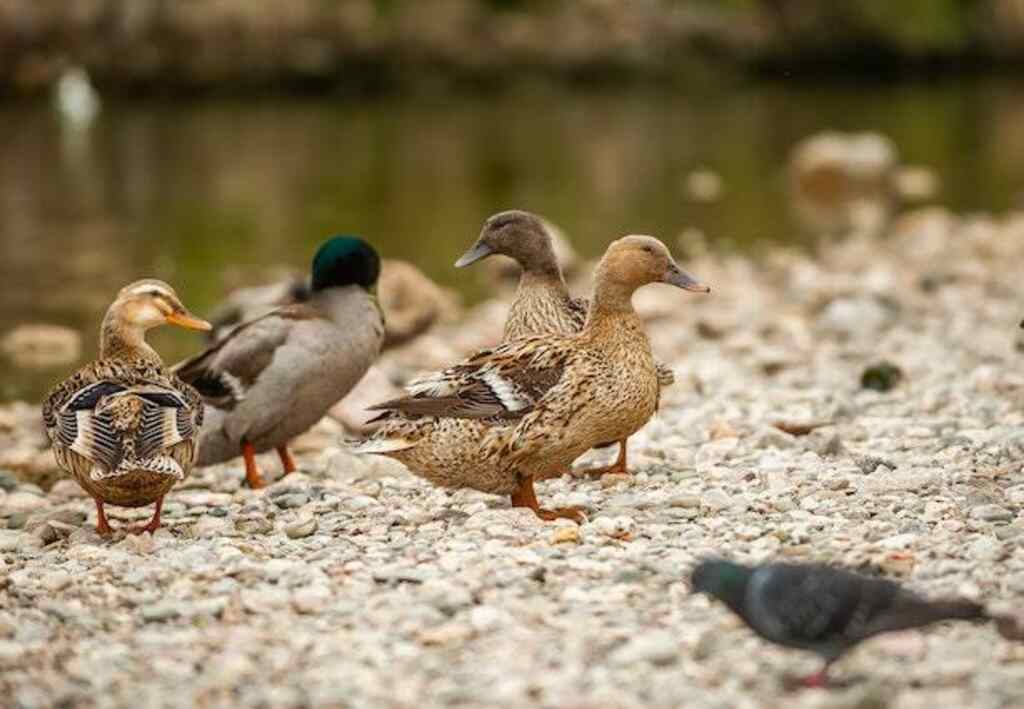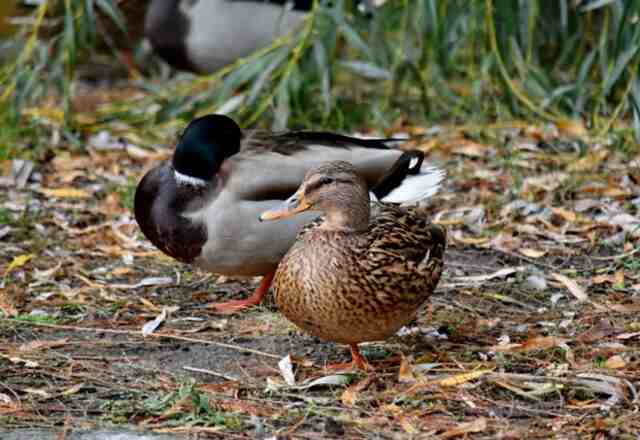Welcome to “Duck Courtship 101: A Guide to Their Mating Rituals”! Ducks may seem like charming creatures, but their mating rituals are far more complex than meets the eye. In this guide, we’ll explore the fascinating world of duck romance, uncovering the secrets behind their unique behaviors and displays of affection. Whether you’re a nature enthusiast or simply curious, join us as we unravel the captivating dynamics of duck mating rituals.
Table of Contents
- 1 How Do Ducks Mate?
- 2 Duck Mating Behavior
- 3 Reproductive Anatomy
- 4 Mating Behavior
- 5 Breeding and Incubation
- 6 Domesticated Ducks
- 7 Fertility and Reproductive Health
- 8 FAQs: How Do Ducks Mate?
- 8.1 How do male ducks choose their mate?
- 8.2 Do ducks mate for life?
- 8.3 How do ducks reproduce?
- 8.4 Do ducks mate with their siblings?
- 8.5 How often do ducks mate?
- 8.6 Can female ducks choose their mate?
- 8.7 How long does duck mating last?
- 8.8 Why do male ducks have corkscrew-shaped penises?
- 8.9 Do all male ducks have penises?
- 8.10 Do ducks have orgasms?
- 9 Conclusion
- 10 Author
How Do Ducks Mate?
Ducks are known for their unusual mating techniques, which involve males mounting females and lining up their penises with the vaginas of their chosen partners.
Once positioned correctly, the male’s penis explodes outward, into the oviduct of the female, in a process that takes approximately one-third of a second.
Male ducks have two main organs that are used for reproduction: the testes and the cloaca. The testes are located inside the body cavity, near the kidneys, and produce sperm.
The cloaca is an opening near the base of the tail that collects both urine and semen. When two ducks are ready to mate, the male will mount the female from behind.
He will then line up his penis with her oviduct, before entering and performing copulation.
As you can see, the act of copulation in ducks can be quite complicated, but it helps when the female is willing to mate.
Duck Mating Behavior
If you’re interested in learning about how ducks mate, you may be surprised to find out that these birds have some unique mating behaviors.
From courtship displays to mating rituals, ducks have a variety of ways to attract a mate and ensure successful breeding.
Courtship Behaviors
Ducks engage in a variety of courtship behaviors to attract a mate. These behaviors can include head bobbing, tail wagging, and loud quacking.
During courtship, male ducks will often display their colorful feathers to attract females. Some species of ducks will also engage in a dance-like ritual to attract a mate.
Mating Rituals
Once a pair of ducks has bonded, they will engage in a mating ritual. During this ritual, the male duck will mount the female and align his penis with her vagina.
The male duck’s penis is unique in that it is long and spiraled, allowing it to fit into the female duck’s reproductive tract.
Mating can occur multiple times over the breeding season, and the same pair of ducks will often mate for the entire season.
If a female loses her eggs, she will usually mate again with the same male to give herself another chance at successful breeding.
Ducks are also known for their swimming abilities, and mating often occurs in the water. However, ducks must be cautious of predators while mating, as they are vulnerable during this time.
Overall, duck mating behavior is fascinating and unique. From courtship displays to mating rituals, these birds have a variety of ways to ensure successful breeding.
Reproductive Anatomy
Understanding the reproductive anatomy of ducks is important in comprehending how they mate. Ducks, like most birds, have a unique reproductive system that differs from mammals. This section will provide an overview of the male and female reproductive systems.
Male Reproductive System
Male ducks possess a cloaca, which is a single opening that serves as the exit point for both urine and feces. The cloaca also functions as the reproductive organ, where sperm is produced and stored in the testes.
During mating, the male duck’s phallus, which is a retractable organ, protrudes from the cloaca and enters the female’s vaginal canal.
Female Reproductive System
Female ducks also have a cloaca, which serves as the opening for both feces and urine. The female reproductive system is comprised of a pair of ovaries and oviducts.
The ovaries produce eggs, which are fertilized by the sperm during mating. The fertilized eggs then travel through the oviducts, where they develop and are eventually laid.
The vaginal canal in female ducks is unique in that it has a counterclockwise spiral shape. This shape is thought to have evolved as a result of the forced mating behavior of male ducks.
The spiral shape of the vaginal canal makes it difficult for the male’s phallus to enter, giving the female more control over the mating process.
In summary, the male reproductive system of ducks consists of a cloaca, testes, and phallus, while the female reproductive system includes a cloaca, ovaries, oviducts, and vaginal canal.
Understanding the reproductive anatomy of ducks is essential in comprehending their mating behavior.
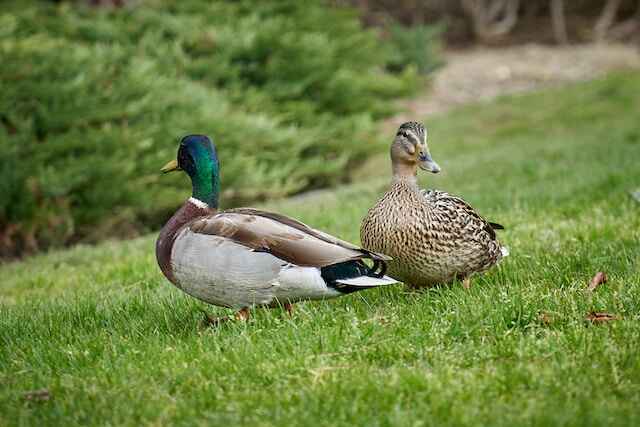
Mating Behavior
When it comes to mating, ducks have a unique and interesting approach to ensure successful reproduction. Here are some key factors to consider:
Successful Reproduction
Ducks mate for the season, and the same drake will stick around to mate with the same female multiple times over this period to ensure successful reproduction.
Males become more aggressive during mating season, competing with other males for access to females. They also become more vocal, attempting to attract mates by calling out to them.
During sex, male ducks have a unique way of mating with their female partners. When the time is right, the male duck mounts the female and carefully positions his corkscrew-shaped penis with the oviduct or vagina of his chosen mate.
Then, in a matter of seconds, the drake’s penis explosively unfurls and enters the female, completing the act of copulation in just one-third of a second.
The sperm transfer occurs quickly, and the male will then dismount and move on to the next female.
Forced Copulation
Unfortunately, forced copulation is a common occurrence in the duck world. Some males will attempt to mate with females even if they are not interested or have already mated with another male. This can lead to unwanted pregnancies and can be harmful to the female.
It’s important to note that forced copulation is not the norm and is only seen in a small percentage of duck populations. If you observe this behavior, it’s best to let nature take its course and not interfere.
In conclusion, ducks have a complex reproductive system that allows for successful reproduction during mating season. While forced copulation can occur, it is not the norm and should be left to nature to handle.
Breeding and Incubation
Breeding and incubation are important aspects of the reproductive cycle of ducks. In this section, we will discuss the process of breeding and incubation, including nesting and homestead, egg laying, and incubation.
Nesting and Homestead
Ducks typically build their nests near water bodies, such as ponds, lakes, or rivers. They prefer to nest in areas with dense vegetation, such as tall grasses or reeds.
The nest is usually a shallow depression in the ground, lined with feathers and other soft materials. Once the nest is built, the female duck will lay her eggs in it.
Ducks are known to lay anywhere from 5 to 14 eggs per clutch, depending on the species. The eggs are usually laid one at a time, with a gap of a day or two between each egg.
Egg Laying and Incubation
After laying the eggs, the female duck will begin incubating them. Incubation typically lasts for around 28 days, during which time the female duck will remain on the nest, keeping the eggs warm and safe.
During incubation, the eggs are turned periodically to ensure that the developing embryos receive even heat distribution. Ducks are known to turn their eggs using their bills, but some species may also use their feet.
Once the eggs hatch, the ducklings will emerge from the shells. The ducklings are born with a full set of feathers and are able to swim and feed themselves almost immediately.
They will stay with their mother for several weeks, during which time she will protect them and teach them how to forage for food.
In conclusion, breeding and incubation are important aspects of the reproductive cycle of ducks. Nesting and homestead, egg laying, and incubation are all critical stages that ensure the survival of the species.
By understanding these processes, you can gain a deeper appreciation for the incredible life cycle of ducks.
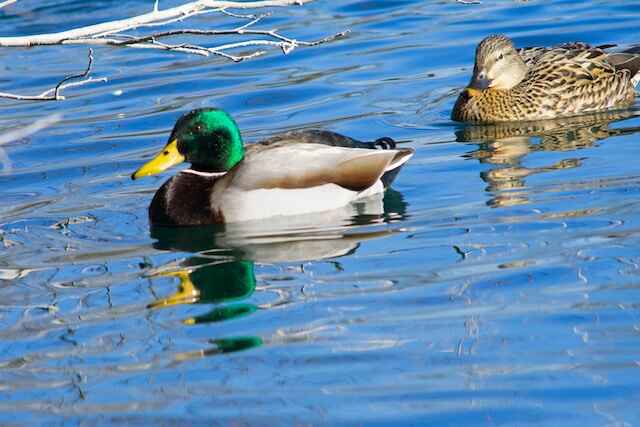
Domesticated Ducks
If you are interested in breeding ducks, it’s important to understand the mating behavior of domesticated ducks. Domesticated ducks are kept for their meat, eggs, and feathers. Each breed of ducks has its own unique characteristics.
Breeds of Domesticated Duck
There are many breeds of domesticated ducks, including Welsh Harlequins. These ducks are known for their colorful plumage, which makes them attractive to breeders.
Other popular breeds include Pekin, Rouen, and Muscovy ducks. Each breed has its unique features, such as size, color, and egg-laying capacity.
Courtship and Mating in Domesticated Ducks
Domesticated ducks are seasonal breeders, and their mating behavior is influenced by environmental cues, such as day length and temperature.
During the breeding season, drakes develop nuptial plumage, which is a sign of sexual maturity. They also engage in ornate feather displays to attract females.
When a drake is ready to mate, he will approach a female and engage in sexual exploration. Assuming the female is open to mating, she will permit the male to mount her.
During copulation, the male’s penis expands and shoots sperm into the female’s opening. Domesticated ducks can be monogamous or polygamous, depending on the breed.
Some breeds, such as Welsh Harlequins, are known for their seasonal monogamy. This means that they pair up with a mate for the breeding season and then find a new mate the following season.
Selective breeding has also influenced the mating behavior of domesticated ducks. Breeding for certain traits, such as egg-laying capacity or meat quality, has led to changes in their sexual cycle and behavior.
In conclusion, understanding the mating behavior of domesticated ducks is essential for successful breeding.
By recognizing the breeding patterns of different breeds and providing the right nutritional cues, you can encourage healthy mating behavior and ensure a successful breeding season.
Fertility and Reproductive Health
Reproductive Organs of Ducks
Ducks possess two reproductive organs: the ovaries and oviducts. The ovaries contain eggs that are fertilized by sperm from a male during sexual intercourse.
After fertilization, the eggs travel through the oviducts to be laid in nests or on water surfaces such as ponds or lakes.
The male ducks, on the other hand, have a phallus that can extend up to 17 inches in length and can be quite flexible.
Seasonal Bonds and Male-to-Female Ratio
Ducks form seasonal bonds that can last for an entire breeding season. During this time, the same drake will stick around, and mating can occur multiple times over this period to ensure success.
It is important to maintain a good male-to-female ratio, as too many males can cause violence during mating and can lead to injuries or death of the female ducks.
A ratio of one male to four or five females is generally recommended for optimal fertility.
Dangers of Too Many Males
Having too many males in a flock can lead to increased aggression and competition for mates. This can result in violent behavior during mating, which can cause injuries and even death to the female ducks.
It is important to monitor the male-to-female ratio and separate any aggressive males to ensure the safety and well-being of the flock.
In conclusion, maintaining a predator-free life and a good male-to-female ratio are crucial for the reproductive health and fertility of ducks.
By understanding the reproductive organs of ducks and the dangers of too many males in a flock, you can ensure a successful breeding season for your ducks.
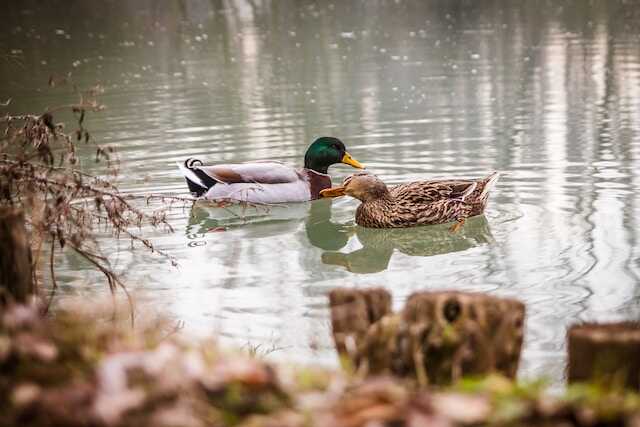
FAQs: How Do Ducks Mate?
How do male ducks choose their mate?
Male ducks usually perform elaborate courtship displays to attract female ducks. They may flap their wings, bob their heads, and make various vocalizations to impress females.
Do ducks mate for life?
Not all ducks mate for life, but some do. For example, mallards, wood ducks, and swans are known to form long-term pair bonds.
How do ducks reproduce?
Ducks reproduce sexually, with males fertilizing the eggs produced by females. After mating, the female duck lays eggs in a nest and incubates them until they hatch.
Do ducks mate with their siblings?
Ducks may mate with their siblings, but it’s rare. Inbreeding can lead to genetic problems, so it’s generally not recommended.
How often do ducks mate?
Ducks may mate multiple times during the breeding season, which typically occurs in the spring and early summer. The exact frequency varies depending on the species.
Can female ducks choose their mate?
Female ducks have some control over who they mate with and may reject unwanted advances from males. They may also choose mates based on certain traits, such as plumage or vocalizations.
How long does duck mating last?
The actual act of duck mating lasts only a few seconds, but the courtship and pair-bonding process may take several weeks or months.
Why do male ducks have corkscrew-shaped penises?
The corkscrew shape of the male duck’s penis is thought to be an adaptation for forced copulation. Some male ducks engage in forced copulation, so the shape of their genitalia may help them maintain their grip during mating.
Do all male ducks have penises?
No, not all male ducks have penises. Some species, such as the muscovy duck, have evolved to mate by pressing their cloacas together, rather than using a penis.
Do ducks have orgasms?
It’s unclear whether ducks experience orgasms or any kind of sexual pleasure. Some scientists have suggested that ducks may have evolved to mate quickly and without much pleasure, as a way of avoiding predators.
Conclusion
In conclusion, duck mating is a fascinating and complex process that involves unique physical and behavioral adaptations.
From their impressive genitalia to their intricate courtship rituals, ducks have developed a variety of strategies to ensure reproductive success.
By understanding how ducks mate, we can gain a deeper appreciation for these remarkable birds and the natural world around us.

